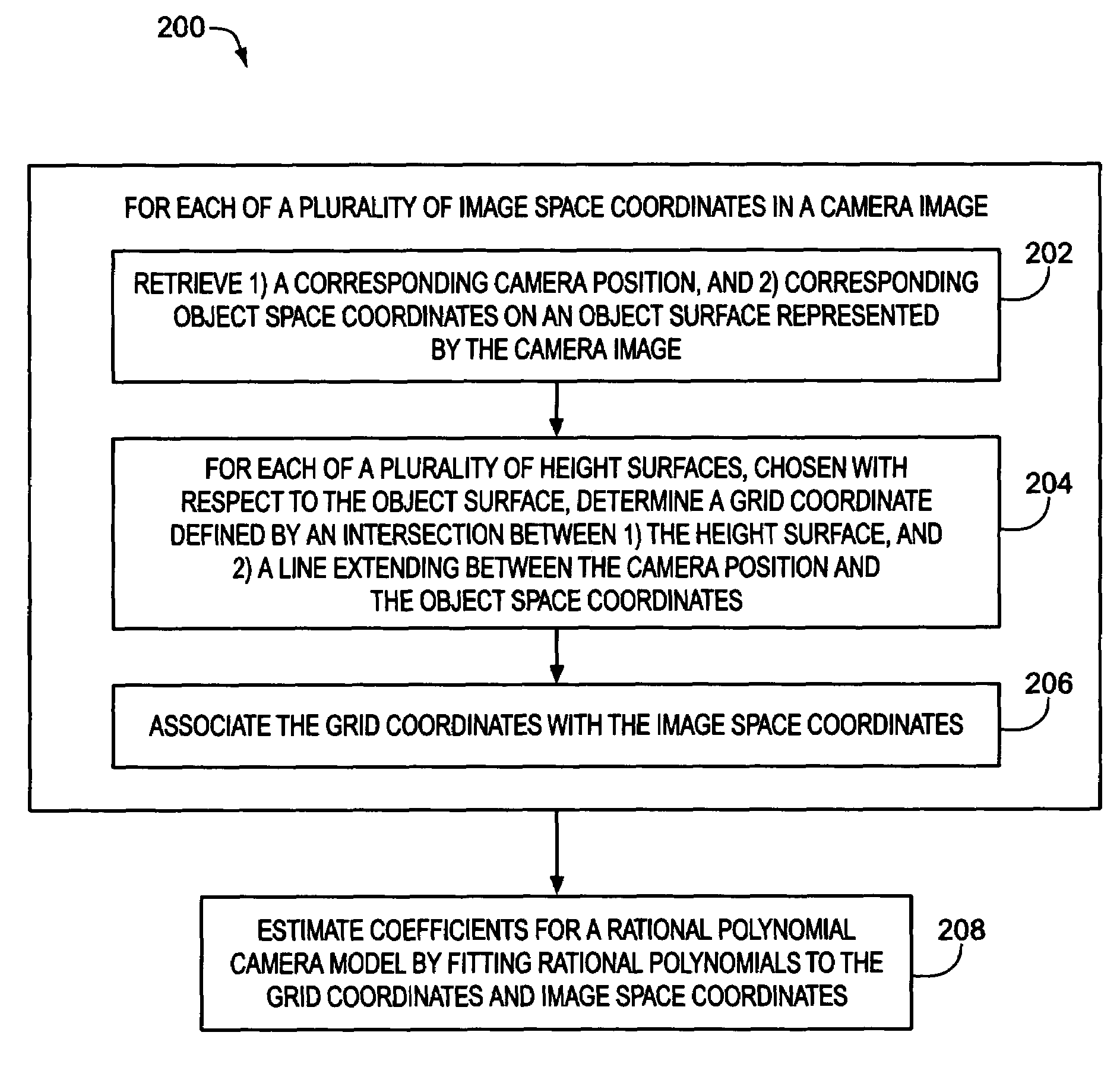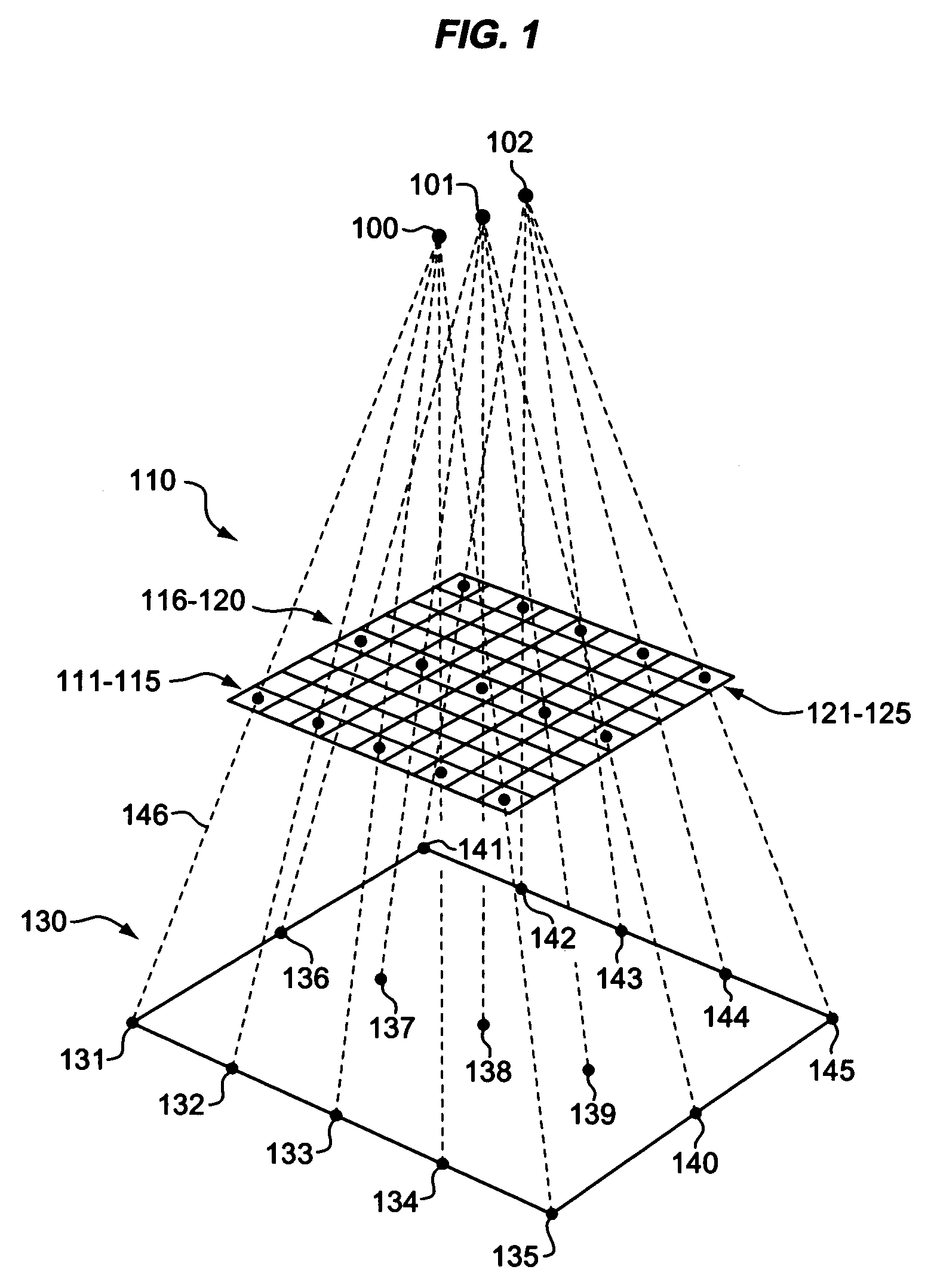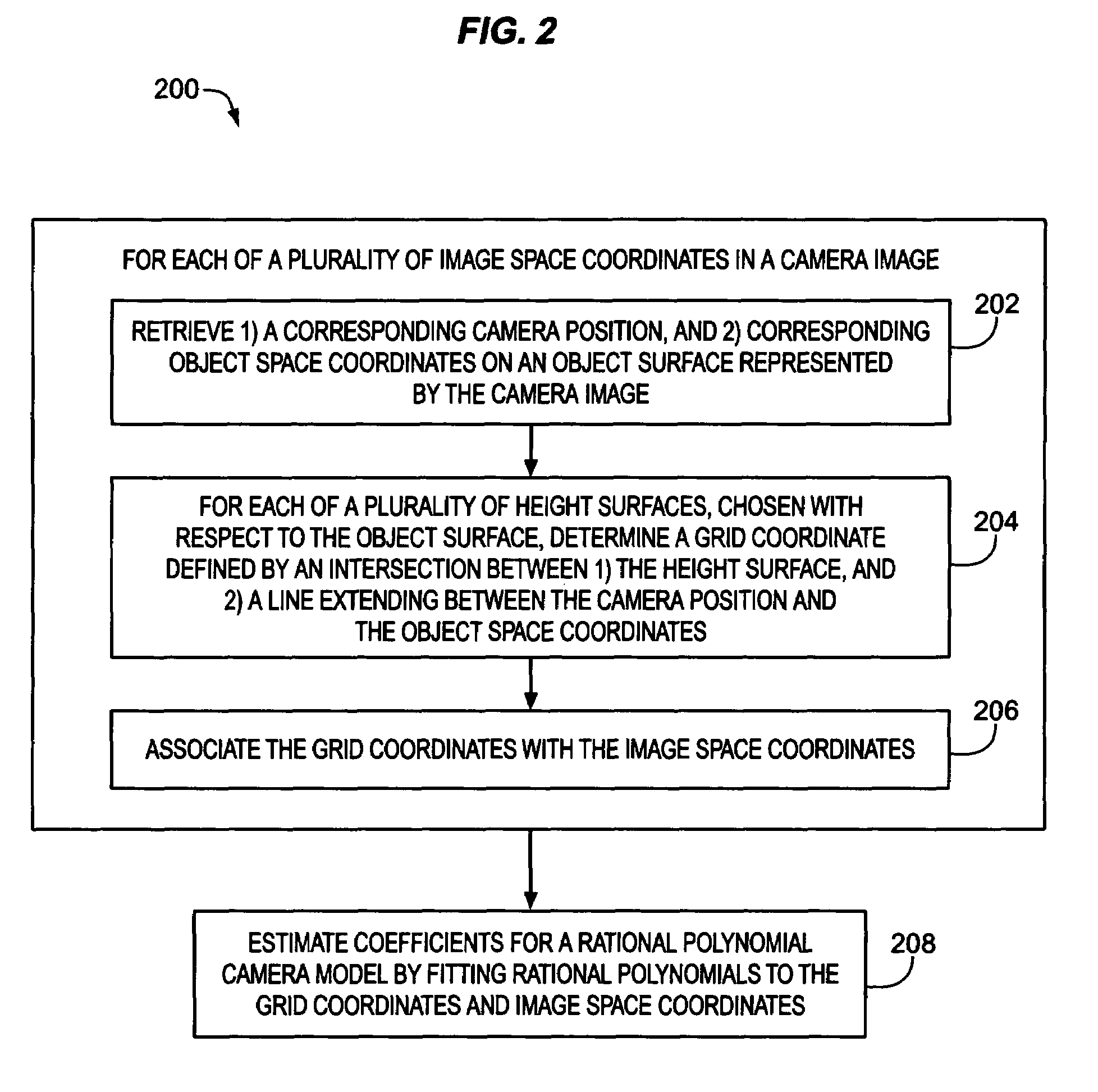Estimation of coefficients for a rational polynomial camera model
a camera model and coefficient estimation technology, applied in image analysis, image enhancement, instruments, etc., can solve the problems of difficult to find, difficult to implement in software packages, and models may be highly complex mathematical models
- Summary
- Abstract
- Description
- Claims
- Application Information
AI Technical Summary
Benefits of technology
Problems solved by technology
Method used
Image
Examples
Embodiment Construction
[0012]Terra is a satellite launched in December 1999 as part of the National Aeronautics and Space Administration's (NASA's) Earth Observing System (EOS). The Terra satellite hosts five different instruments that aid scientists in studying interactions among the Earth's atmosphere, lands, oceans, life, and radiant energy (heat and light). Of Terra's five instruments, the Advanced Spaceborne Thermal Emission and Reflection Radiometer (ASTER) instrument captures Terra's highest resolution image data. The ASTER instrument uses three subsystems to collect image data in fourteen spectral bands. A first of the subsystems captures image data for three visible and near-infrared (VNIR) bands, at a pixel resolution of fifteen meters; a second of the subsystems captures image data for six Shortwave Infrared (SWIR) bands, at a pixel resolution of thirty meters; and a third of the subsystems captures image data for five thermal infrared (TIR) bands, at a pixel resolution of ninety meters.
[0013]A...
PUM
 Login to View More
Login to View More Abstract
Description
Claims
Application Information
 Login to View More
Login to View More - R&D
- Intellectual Property
- Life Sciences
- Materials
- Tech Scout
- Unparalleled Data Quality
- Higher Quality Content
- 60% Fewer Hallucinations
Browse by: Latest US Patents, China's latest patents, Technical Efficacy Thesaurus, Application Domain, Technology Topic, Popular Technical Reports.
© 2025 PatSnap. All rights reserved.Legal|Privacy policy|Modern Slavery Act Transparency Statement|Sitemap|About US| Contact US: help@patsnap.com



